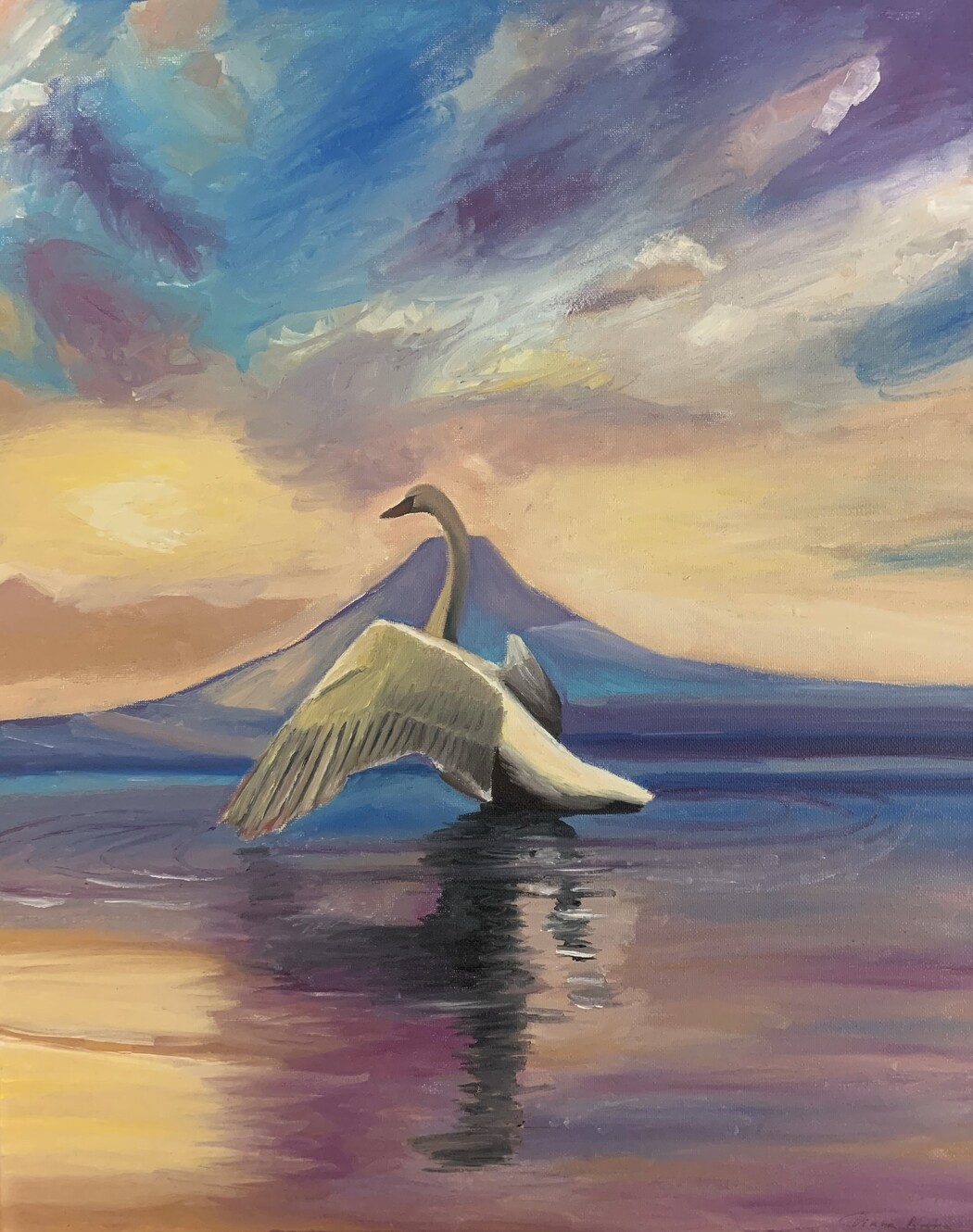Diana Norka
Year of birth: 2000
Your education: Moscow School of Contemporary Art (MSCA)
Describe your art in three words: Warmth, harmony, serenity
Your discipline: Contemporary painting
Instagram

Your work often reflects a strong connection to nature and everyday life. How do these themes influence your creative process?
Nature and everyday life, I feel, are always very inspiring. In them, you can find both a sense of solitude when you’re alone with a beautiful view or notice something about yourself through the mundane tasks that prompt personal reflection, as well as a sense of universality, since we are all connected to the natural world and the same routines.
You mentioned that beauty is a central theme in your art. What does beauty mean to you, and how do you express it through your various mediums?
A phrase that comes to mind is, “Inspiration is always within, and beauty is in the eye of the beholder.” This resonates deeply with me because art not only reveals the artist’s soul but also brings out new meanings that others see in their work. If your painting sparks reflection in someone, it means you’ve conveyed that beauty. An artist only encourages us to ponder our own deep feelings or experiences, and this beauty can be awakened through paintings, photographs, poems… People can recognize themselves in any form of art, which serves as a reflection of their own beauty.

Your paintings are characterized by lightness and bright colors. What techniques do you use to achieve this effect, and why is it important in your work?
The use of oil paints helps to create rich colors and textures, while lightness is achieved through smooth color transitions with blending. This technique makes the painting easier to perceive, as it conveys fluidity, softness, and draws the viewer deeper into the main subject. This immersion, ideally, should be as gentle as possible.
Can you share more about your transition between different media, such as painting, digital photography, and text? How do these forms complement each other in your projects?
Each period of my growth has been expressed through a new medium. I started with poetry and performing on stage, then I began photographing things I liked, participating in various competitions, and two years ago, I turned to painting, choosing it as my profession. Now, all my experiences help in creating paintings, as photography allows me to see my perspective of the world from different angles and situations. Through poetry, I learned to express my emotions, which helps in understanding the meaning and composition of a work. In the future, I certainly want to integrate various mediums to help deepen and feel what I wish to convey to the viewer. Currently, I’m focused on studying academic-scale painting.
Surrealism is one of the themes you explore. What draws you to surrealism, and how do you incorporate elements of it into your landscapes and still lifes?
I think my interest in psychology sometimes finds expression precisely through surrealism. Creating based on fantasy, dreams, and imagination, without adhering to boundaries, helps me engage with the subconscious, which fascinates me. For instance, in one of my paintings, a desert serves as the background, while in the foreground, there’s a living flower and a dried-up tree, symbolizing a paradoxical situation. The point is that the same environment can be comfortable for one and destructive for another. It sounds logical, but the absurdity of the situation still makes me ponder.

You aim to help people see the beauty in the world. How do you think art can influence people’s perception of everyday life?
Art can have a profound impact because many things go unnoticed in the routine. But when you start paying attention to details, a person can’t help but notice these things afterward. In other words, they’ll be “forced” to see what they previously missed. This shift in perception changes one’s outlook, then routine, and eventually life itself.
Your statement mentions the sincerity and kindness in your paintings. How do you ensure these qualities come through in your art?
By adding more tenderness and brightness! I’m always looking for color combinations that create harmony in composition through visual contact. This connection between viewer and art creates beauty in the moment. And this beauty doesn’t fade over time; instead, it grows brighter, more refined, and more valuable each year.

Leave a Reply
You must be logged in to post a comment.